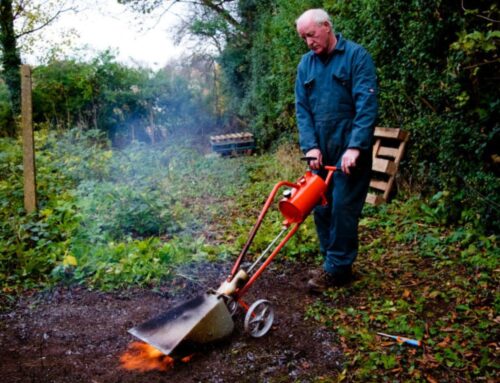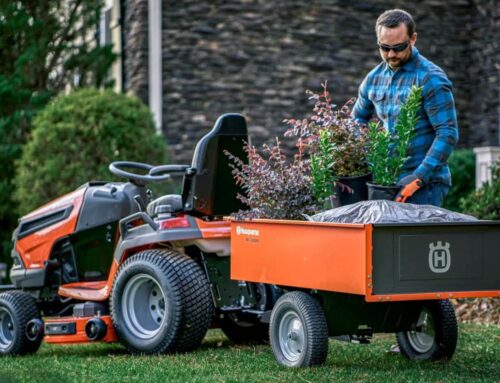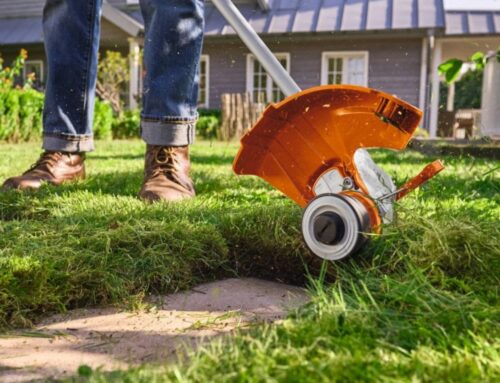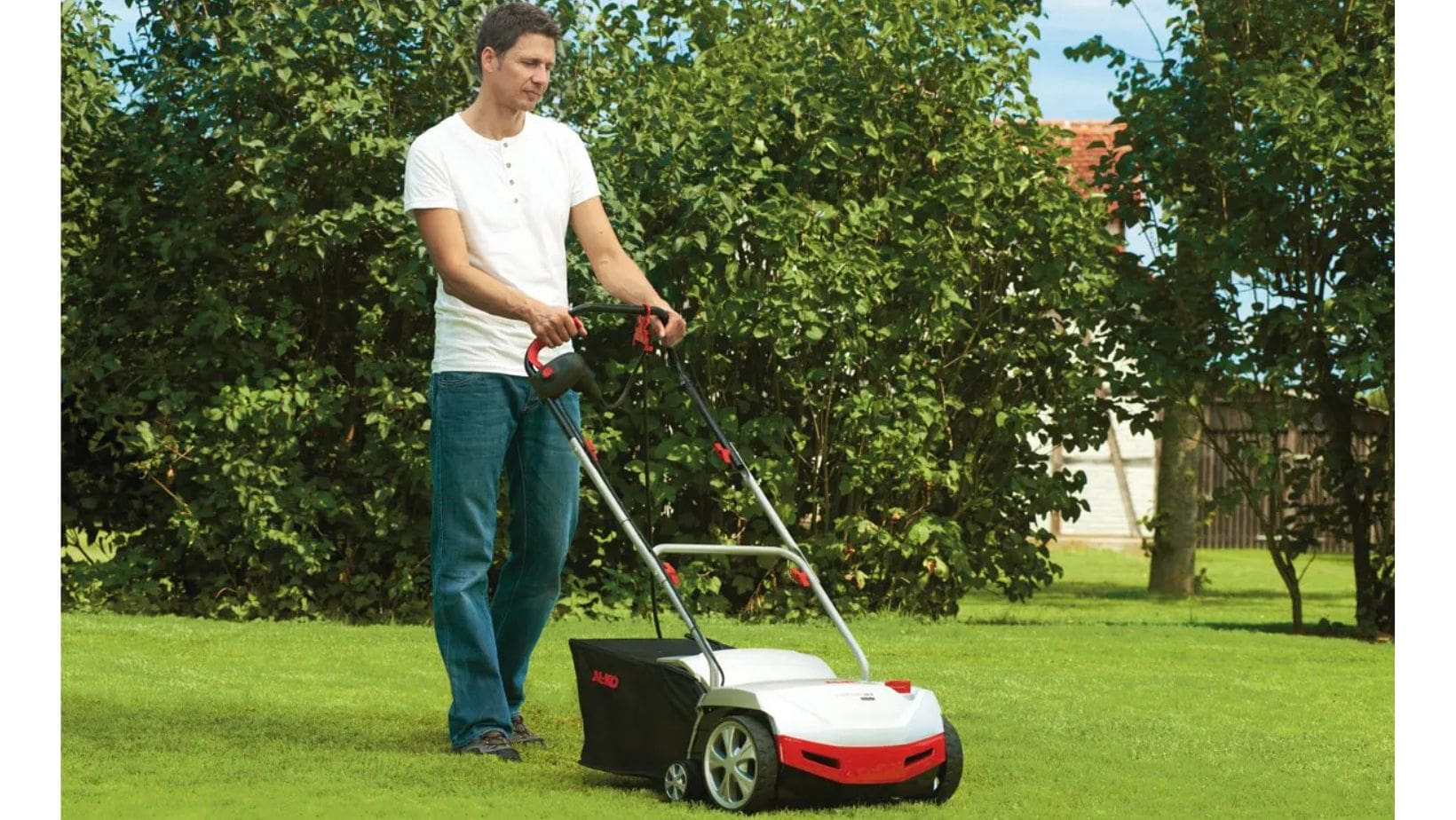
After a hot summer, September is ideal to scarify — remove thatch to improve aeration and root growth. Prep with moss killer and a short mow, scarify deeply, then overseed, fertilise and water. Choose cordless, electric or petrol models by lawn size.
Autumn Countdown: Get Prepared to Scarify Your Lawn
After one of the hottest, driest summers on record, many British lawns still look a little bit worse for wear. Prolonged heat left the grass brittle, patchy and starved of moisture, but as temperatures begin to drop and rainfall becomes more frequent, we’re starting to see some signs of life. With autumn just around the corner, it’s the ideal time to give your lawn the TLC it needs to fully recover. And there’s no better way to do this than by scarifying it.
Why Think About Scarifying Now?
September is widely regarded as the best month to scarify a lawn, as the grass is actively growing but conditions are mild enough to help it make a swift recovery. To give you time to prepare properly for this task, we’re now going to take a look at what scarification involves and how to do it correctly. Crucially, we’re also going to show you some different lawn scarifiers, so you can get exactly the right machine to achieve the best results for your lawn.
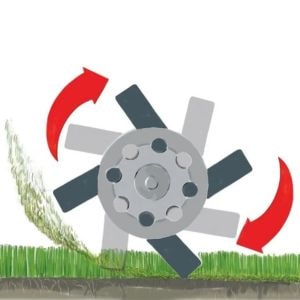 What Is Lawn Scarification?
What Is Lawn Scarification?
Scarifying is the process of removing thatch — the dense layer of moss, dead grass, and organic debris that accumulates between the soil and the green blades above it. Unlike surface litter, such as fallen leaves, thatch weaves itself into the base of the turf, gradually choking the grass beneath. Left untreated, it prevents oxygen, water and nutrients from reaching the roots, making your lawn weak, uneven, and increasingly susceptible to weeds, pests, and disease.
A lawn scarifier tackles this problem head-on by using sharp, rotating blades to cut into the surface of the turf, pulling out layers of thatch while also scoring the soil. This doesn’t just clear suffocating material; it encourages stronger, deeper root growth and improves aeration, leading to healthier, more vibrant grass moving forwards.
 Scarifying vs. Dethatching
Scarifying vs. Dethatching
The terms are often confused, but they are not the same thing. Dethatching is a lighter process, typically done with a rake or tine attachment, to remove a thin layer of surface debris. Scarifying, by contrast, is much more intensive, cutting down into the lawn to lift thicker thatch and moss. This makes it the more effective option when your lawn shows clear signs of decline, or when you want long-term improvement rather than a short-term tidy.
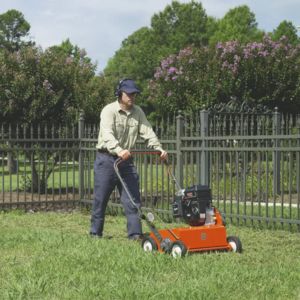 When Should I Scarify My Lawn?
When Should I Scarify My Lawn?
The timing of scarification is essential. Too early, and you risk damaging grass that has been stressed by heat, drought, and foot traffic. Too late, and the colder conditions prevent regrowth, leaving your lawn bare and vulnerable. That is why September is invariably the perfect window: the grass is growing strongly, the soil retains its warmth, and there is normally enough moisture to aid a quick recovery.
Scarifying once a year is usually sufficient, though heavily neglected lawns may need attention more frequently. To check if your lawn requires it, part the grass with your fingers. If you can see bare soil, thatch build-up isn’t an issue. If the soil is hidden beneath a dense mat, it’s time to act.
How to Scarify a Lawn
Successful scarifying requires more than simply running the machine over the lawn. Preparation is key:
- Apply a moss killer a couple of weeks beforehand to stop live spores spreading.
- Mow your lawn short on a dry day, making it easier for the scarifier’s blades to penetrate the soil.
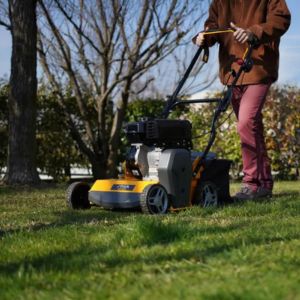 Once you begin scarifying, do so on a high setting. Then gradually reduce it, working across the lawn several times for complete coverage.
Once you begin scarifying, do so on a high setting. Then gradually reduce it, working across the lawn several times for complete coverage.
But be prepared: immediately after you scarify, your lawn may look worse before it looks better. Bare patches and pulled-up debris are normal. With proper aftercare — overseeding, feeding with fertiliser, and regular watering — recovery is quick, and the results will be good.
Different Types of Scarifier
Like with any garden-based task, it’s important to have the right tools for the job. There are three main types of scarifier for sale, each with their own unique selling points.
Cordless Scarifiers: Quiet and Convenient
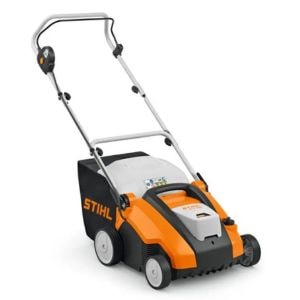 Cordless scarifiers operate quietly and produce zero emissions, making them an environmentally friendly option. Their cable-free design makes them very easy to manoeuvre, although their suitability for larger lawns is dependent on battery runtimes.
Cordless scarifiers operate quietly and produce zero emissions, making them an environmentally friendly option. Their cable-free design makes them very easy to manoeuvre, although their suitability for larger lawns is dependent on battery runtimes.
One of our most popular models is the STIHL RLA 240 Cordless Scarifier. Designed for lawns up to 250 m², it combines sharp fixed blades for deep scarifying with a spring tine roller for lighter dethatching. And with a 13-inch (34cm) working width, this machine is agile enough for irregular spaces.
Part of STIHL’s AK battery system, the RLA 240 delivers consistent levels of power throughout operation, with no decline in performance as the battery depletes. It comes with an adjustable working depth, spacious 50-litre collection box, and foldable handle for space-saving storage. With low sound levels too, it’s the perfect scarifier for suburban settings.
Electric Scarifiers: Affordable and Effective
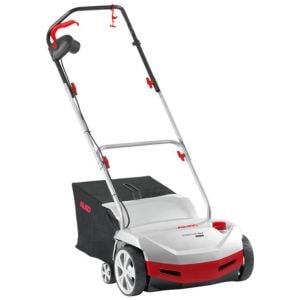 Electric scarifiers are usually the cheapest options, making them appealing to gardeners operating on a strict budget. Lightweight and easy to operate, they are tailored to smaller gardens that have an outside plug socket.
Electric scarifiers are usually the cheapest options, making them appealing to gardeners operating on a strict budget. Lightweight and easy to operate, they are tailored to smaller gardens that have an outside plug socket.
The superb AL-KO 38 E Electric Scarifier combines scarifying, raking, and collecting in one versatile package. You can easily switch between the steel-bladed scarifying roller and the lawn-rake roller without the need for tools. The machine is built with a 15-inch (38cm) working width and 55-litre collector, so can comfortably handle lawns of up to 800 m².
Other notable features include an easy-to-adjust five-stage working depth and a fully adjustable handle that makes using the scarifier comfortable, whatever your height or build.
Petrol Scarifiers: Power for Large Lawns
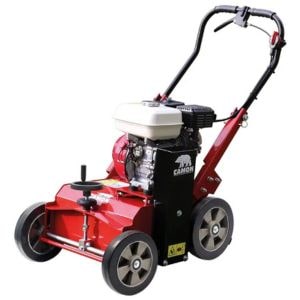 For larger lawns or professional use, petrol scarifiers take some beating. These heavy-duty machines are designed to deliver the greatest levels of power and endurance, making them the best choice of scarifier for demanding scarifying work.
For larger lawns or professional use, petrol scarifiers take some beating. These heavy-duty machines are designed to deliver the greatest levels of power and endurance, making them the best choice of scarifier for demanding scarifying work.
The Camon LS42-MK2 Lawn Scarifier is one of the most impressive models. Powered by a Honda GX160 engine, it is fitted with a free-swinging blade cartridge with 30 reversible blades, which dig deep to lift large amounts of thatch and moss.
Designed with scrapers to prevent debris build up, the narrow wheels allow for excellent manoeuvrability. Optional accessories include a spacious 55-litre collector bag and a range of interchangeable cartridges that allow you to tailor the scarifier to your lawn’s exact needs.
 Aftercare: Helping Your Lawn Recover
Aftercare: Helping Your Lawn Recover
Scarifying may leave your lawn looking bare, but this is the beginning of its recovery. Overseeding after scarification fills gaps, while a nitrogen-rich fertiliser helps new growth establish quickly. Keeping the soil moist during this period is vital, so water regularly if rainfall is lacking. Within weeks, you’ll notice a thicker, greener, and healthier lawn.
A Short Visual Guide
If you’d like to watch a short video about lawn scarification, here’s Alan Titchmarsh from Gardener’s World explaining how lawns can be transformed with the right approach.
More Expert Advice Here
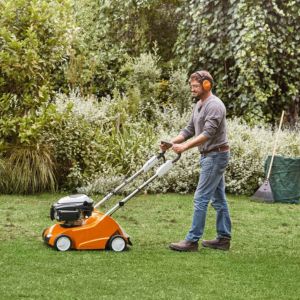 At Ron Smith & Co, we understand that scarifying can feel daunting, especially if your lawn is in poor condition after summer. That is why our expert team is on-hand to guide you. And if you’re considering buying a new cordless, electric, or petrol scarifier to carry out your work, we can also help you find the best machine for the job.
At Ron Smith & Co, we understand that scarifying can feel daunting, especially if your lawn is in poor condition after summer. That is why our expert team is on-hand to guide you. And if you’re considering buying a new cordless, electric, or petrol scarifier to carry out your work, we can also help you find the best machine for the job.
The Time to Plan Your Scarifying Is Now
With summer fading and autumn fast approaching, September offers the best opportunity to breathe life back into your lawn. Scarifying removes suffocating thatch, encourages fresh growth, and sets the stage for healthier grass through winter and into spring. And trust us, investing in the right tool will make all the difference.


